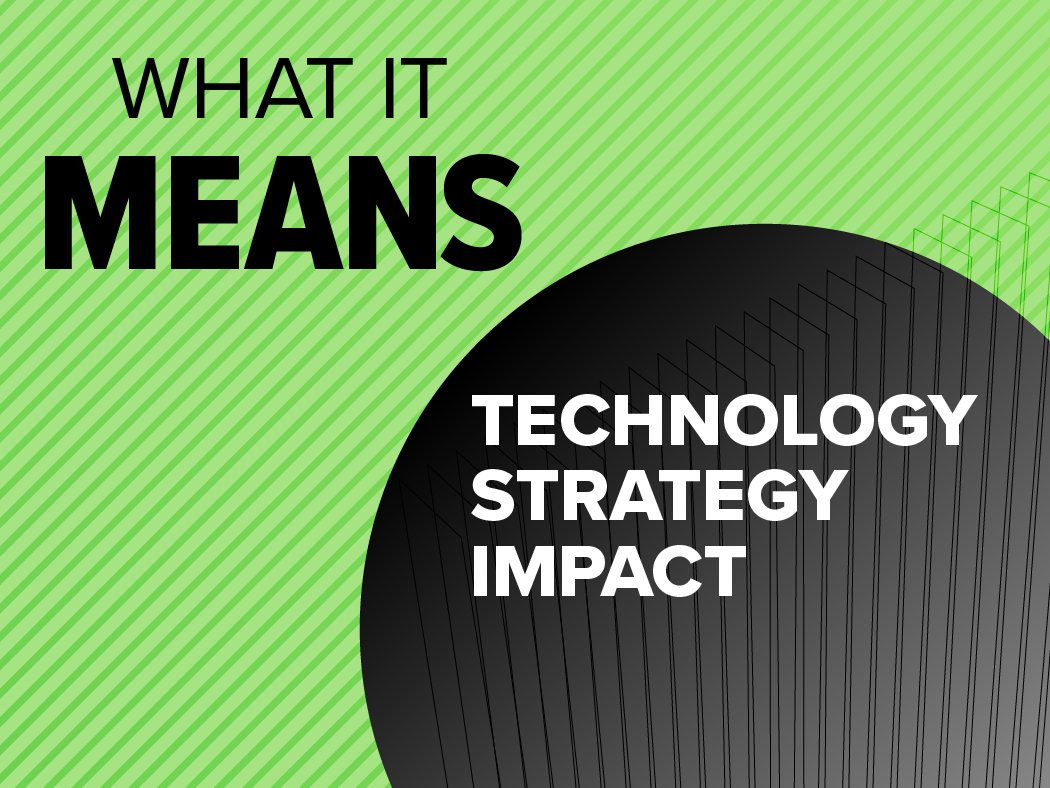Featuring:
Meghan Condon, Vice President of Digital Transformation and Planning, Best Buy, and Sean McCormack, Chief Information Officer, First Student
Show Notes:
What does it take to craft an impactful technology strategy in today’s fast-paced digital landscape? In this episode of What It Means, two recent winners of Forrester’s Technology Strategy Impact Award discuss their high-performance IT strategies and provide specific examples of how the strategies drove business results.
The interview was conducted during a keynote session at Technology & Innovation Summit North America in September by Forrester’s Chief Research Officer Sharyn Leaver. In the interview, Meghan Condon, Vice President of Digital Transformation and Planning at Best Buy, and Sean McCormack, Chief Information Officer at First Student, share details and examples of how their respective technology strategies have driven meaningful innovation within their organizations.
After a short review of the criteria for winning the award and some details on how entries are evaluated, McCormack begins the discussion by sharing the key pillars of First Student’s technology strategy, which include cybersecurity, digital products, and data and analytics. To illustrate how First Student’s tech strategy aligns to its business and customers, McCormack shares details of the firm’s FirstAlt project, which leverages technology to organize alternative transportation options and help the company manage driver shortages.
Along the same lines, Condon discusses the development of Best Buy’s Problem Code Predictor tool which uses AI to streamline repair recommendations so that customers get the repairs they need as efficiently as possible.
Throughout the conversation, both Condon and McCormack emphasize the importance of fostering cross-functional collaboration and communication to drive alignment between IT and business teams. McCormack says that hosting a series of “technology showcases” with various business units at First Student helped the technology organization understand business processes and pain points that his organization could then address for the business. Eventually, the perception of IT changed within the company from being a help desk to a value generator. “That’s why it’s so important to get out there and meet those people” in person, he says.
The conversation also touches on the role of outside partners in helping technology organizations meet their goals and how different leadership styles can help turn a technology strategy from concept to reality on a daily basis.
The discussion later turns to how each firm has leveraged and managed AI across its technology strategy. McCormack says that one of the keys for First Student was establishing an AI governance policy to clarify how AI should be used within the organization. He also provides some examples of how the technology organization helped educate the broader company about AI use cases and policies. Condon says that her organization also developed an AI policy and council and focused on leveraging AI in three specific customer-focused use cases to help put some “scaffolding in place” before expanding AI use more broadly across Best Buy.
The conversation concludes with both Condon and McCormack sharing their future technology plans, so be sure to stick around to hear that. To learn more about other past winners of the Technology Strategy Impact Award, check out this archive of past winners. If you think your technology organization may be a good candidate for the award, look for our call for entries coming in early 2025.




